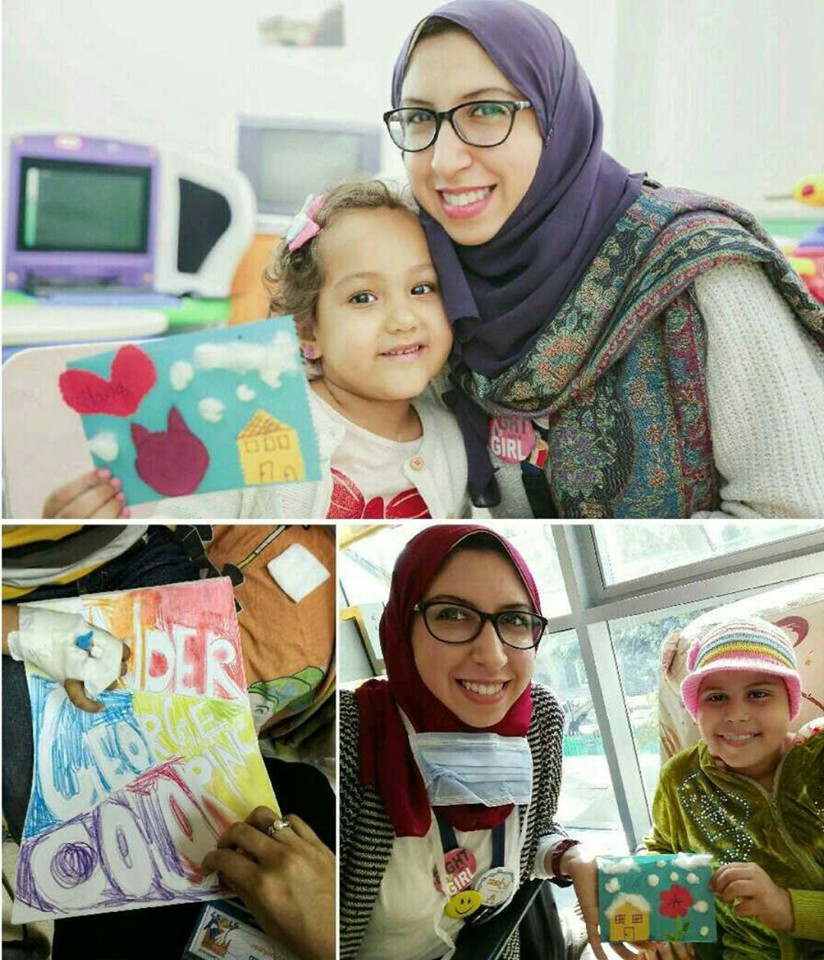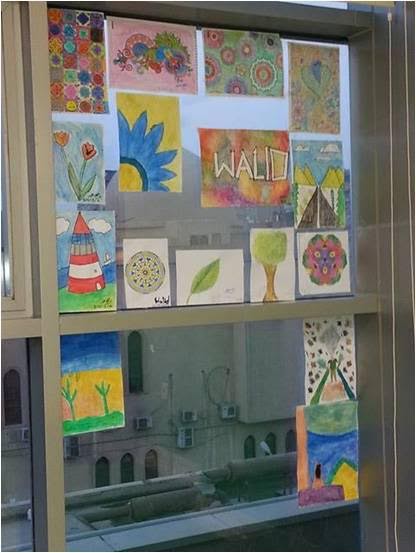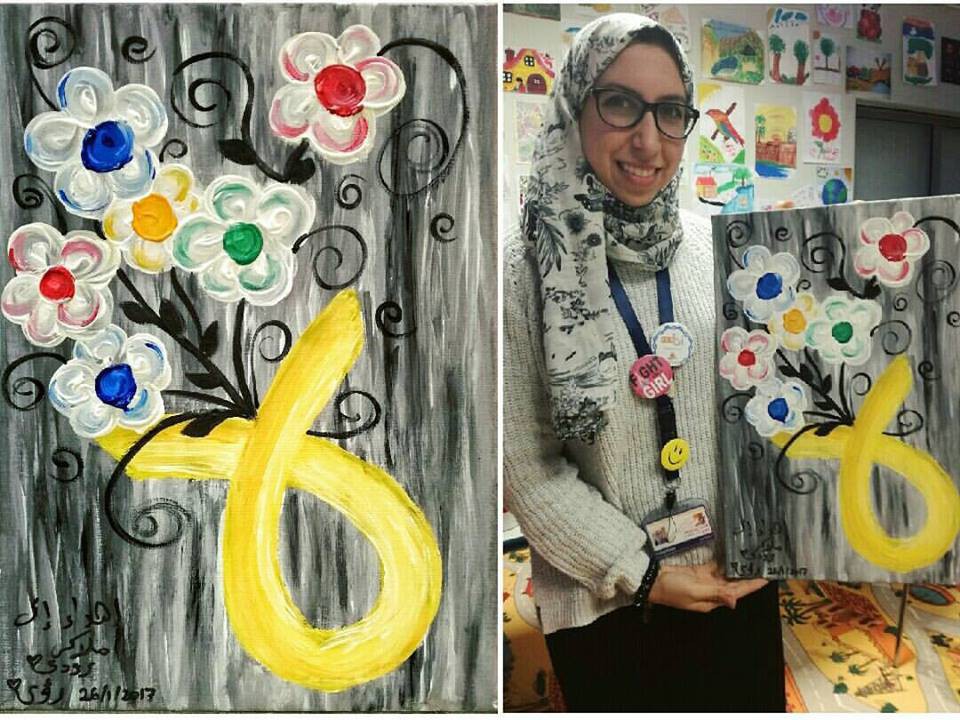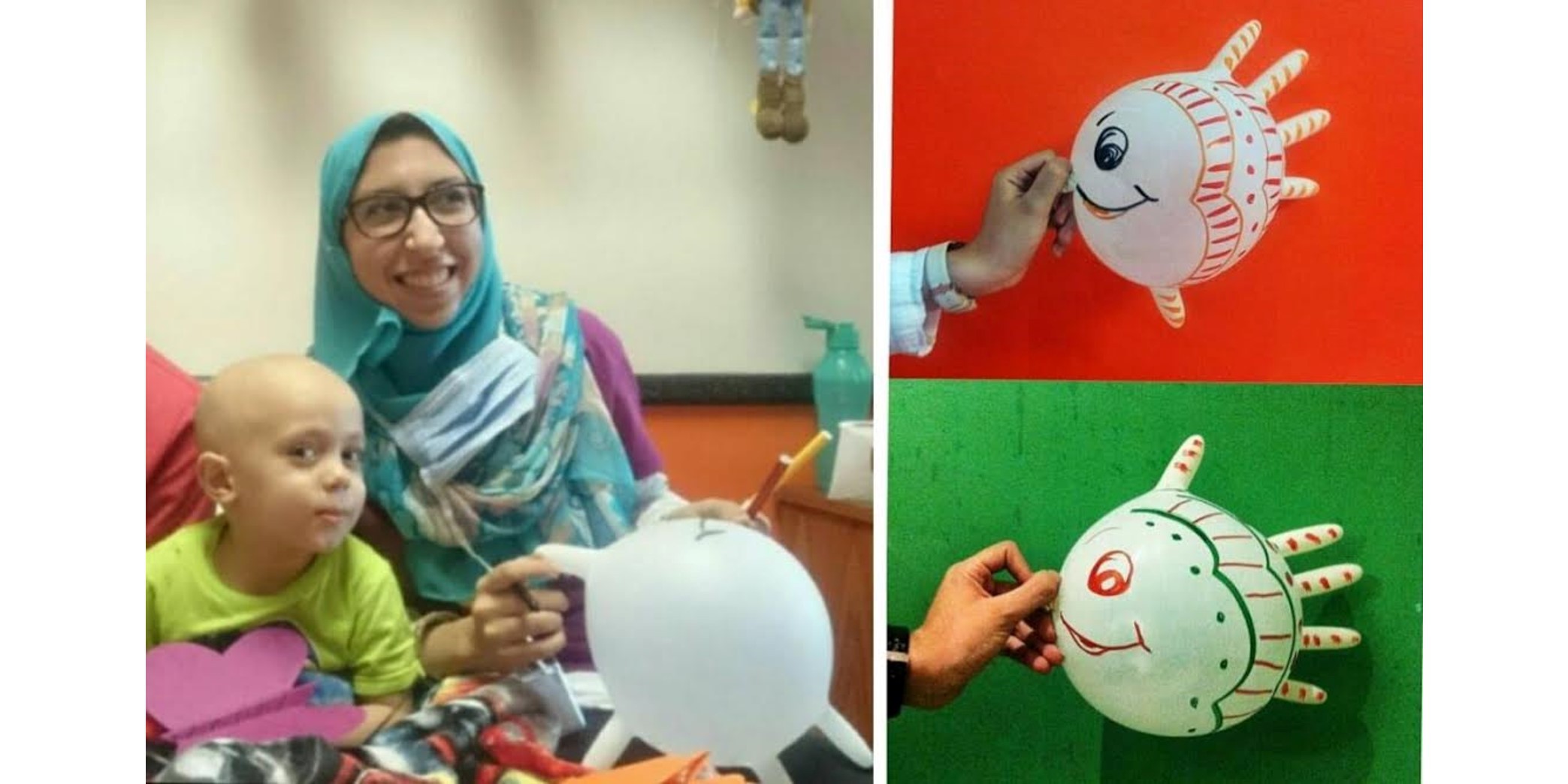The young graduate of architecture and veritable queen of volunteering, Roaa Ahmed, dedicates much of her time to improving the lives of children. Volunteering in orphanages, educational facilities in informal slums and children’s hospitals, Roaa has truly seen the best and the worst of Egypt. From these experiences, she has discovered the power of art in changing the mentality of the children she helps. She met with us to share her heartwarmingly inspirational tale of transforming the greatest fears of seriously ill children into art tools.
“When I left I couldn’t stop thinking about the place and just had to go back.”
How did Roaa’s journey in volunteering begin? “I moved to Egypt from Saudi Arabia for university in 2011. Volunteering helped me fill that overwhelming gap between my memories of happy summer holidays in Egypt and the harsh reality of living and studying here during the Revolution whilst struggling to fit in. I went first with a university group to deliver food to an informal settlement and it gave me a completely new perspective. When I left I couldn’t stop thinking about the place and just had to go back”, Roaa tells us. From that moment, Roaa became committed to balancing a busy life of studying architecture with her newfound love of helping people.

During her university studies, Roaa trained with an engineering consultancy firm in the medical architecture department and discovered the wonders of 57357 Children’s Hospital. She was instantly captivated and decided to start volunteering there. With the mission of providing the children with emotional support, Roaa found that art was the magic tool. “At first I went into their rooms and tried to cheer them up through just speaking to them, but many of them didn’t really want to engage. So I started bringing in some art materials and drawing in front of them. They started getting curious and making comments. Eventually they would ask for their own paper or to draw their own picture. I was creating a form of interaction that they felt like they were controlling”, Roaa explains.
“I started taking the things that scared them and transforming them into something artistic.”
Although it was having a positive impact on their moods, Roaa realized it wasn’t enough, “When the doctor came, they would still be scared, so I still wasn’t changing their mindset towards the doctors and the hospital”, she tells us. Roaa decided to try a new tact, “I started taking the things that scared them and transforming them into something artistic”. This is when the real creativity began!
“The first thing I tried was cotton balls with my little friend George who doesn’t like the blood during injections. We used the cotton to make snowballs on a painting and it was very beautiful. He told me that he liked that the cotton was on the painting and not on his blood. This sparked the idea that it could be beneficial in changing a child’s mindset. The next time he sees cotton in the hands of the nurse, the first thing that pops in his mind is not blood, it is that this is the same cotton that we used to create snow. Next I took white medical cloth, rolling it into brushes to mix colors. Then we bought syringes without the needles and injected the paints, blasting them onto pages”, Roaa explains. The impact was significant, the children now saw artistic potential in things they used to fear.

“The first child I did this with stopped being scared when the nurse entered, he would say ‘come in and see my art gallery’.”
Roaa’s creative inspiration continued to grow. She tells us, “to have a long lasting effect, I starting putting the art on the walls, turning each of their hospital rooms into an art gallery. The first child I did this with stopped being scared when the nurse entered, he would say ‘come in and see my art gallery’. One of the doctors told me that now when she goes into the room, she asks about the art and tells them she is looking forward to the next piece. Which means that the next time she comes, in the child’s mind she isn’t just coming to give injections, but to enjoy the art as well. This creates a relationship other than strictly the medical one and means that the child is taking an active role in the process of their healing”.
Art has not just been healing for the patients, Roaa has also found that it helped her deal with the emotional traumas of witnessing the deaths of patients that had become like friends and family to her. Despite the hardships, her positivity and commitment has continued, leading to her spreading her healing art to Abu Rish hospital with the organization Bedayat Heyat.

To find out about volunteering at 57357 hospital follow this link,and to get involved with Bedayat Heyat, follow this link.

